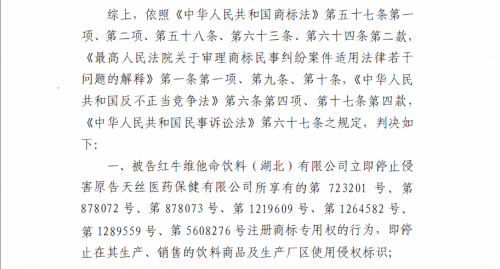python-异常处理和错误调试-asyncio中的错误调试(二)
2023-04-22 05:36:37 来源:腾讯云
 (资料图片)
(资料图片)
使用日志系统
在 asyncio 中,我们还可以使用日志系统进行调试。日志系统可以将程序运行时的信息输出到指定的日志文件或者控制台中,从而方便我们查看程序运行时的状态。
例如,我们定义了一个异步函数 coro(),如下所示:
import asyncioimport loggingasync def coro(): await asyncio.sleep(1) logging.error("除数不能为0") a = 1 / 0 await asyncio.sleep(1)async def main(): await coro()asyncio.run(main())在上述代码中,我们使用 logging 模块输出了一个错误信息。logging 模块提供了多个日志级别,如 debug、info、warning、error 等等。在输出日志信息时,我们可以指定日志级别,从而控制输出信息的详细程度,例如,使用 logging.error() 输出的信息将会输出到控制台或者日志文件中,并且只有当日志级别设置为 error 时才会输出。
在使用日志系统进行调试时,我们可以将日志级别设置为 DEBUG,从而输出更为详细的信息。例如,我们可以将代码修改为如下所示:
import asyncioimport loggingasync def coro(): await asyncio.sleep(1) logging.debug("进入 coro 函数") a = 1 / 0 await asyncio.sleep(1)async def main(): logging.basicConfig(level=logging.DEBUG) await coro()asyncio.run(main())在上述代码中,我们使用 logging.basicConfig() 函数将日志级别设置为 DEBUG,从而输出更为详细的信息。当程序运行时,会在控制台输出以下信息:
DEBUG:root:进入 coro 函数通过输出的信息,我们可以知道程序在哪个函数中出现了错误,从而更方便地进行调试。
关键词:
相关阅读
-
python-异常处理和错误调试-asyncio中的...
在asyncio中,我们还可以使用日志系统进行调试。日志系统可以将程序... -
世界热点!2003年的羊什么时候遇正缘,...
现在已经属于大龄剩女,家里人总是不断催婚,老逼着去相亲,相了几... -
每日关注!泊蝶化妆品这个牌子怎么样_泊...
1、泊蝶(上海)化妆品有限公司是一家不错的公司,有正规的营业执照... -
全球观察:我州召开打击突出涉毒违法犯...
●记者吴富水雷肖本报讯4月21日,我州召开打击突出涉毒违法犯罪攻坚... -
广西灵山县通报网传“某中学1名教师涉嫌...
关于网传“灵山县某中学1名教师涉嫌猥亵女生”事件处理情况说明近日... -
要闻:豪美新材2022年营收54.13亿 董事...
豪美新材2022年营收54 13亿董事长董卫峰薪酬66 83万2023 4 2122... -
天天通讯!床上做什么运动最减肥_3种最...
欢迎观看本篇文章,小升来为大家解答以上问题。床上做什么运动最减... -
热讯:宏碁发布 XZ452CU V 显示器:4...
IT之家4月21日消息,宏碁现已发布新款NitroXZ452CUV电竞显示,44 5英寸5120x1 -
泰国保险公司将为熊猫赔付1500万泰铢 ...
泰国清迈动物园通报,21岁的旅泰大熊猫林惠4月19日凌晨不幸去世。据... -
沈阳高赛尔周五(4月21日)金条456.5元/...
2023年4月21日,实物黄金高赛尔金条价格456 5元 克,相比上一个交... -
qq群被永久停封怎么办啊_qq群被永久停封...
你们好,最近小未来发现有诸多的小伙伴们对于qq群被永久停封怎么办... -
梦见打枪是什么意思好不好_梦见打枪是什...
1、1当你梦见开枪时,不幸的事情就会发生。这是由于你的粗心。你应... -
粤港澳大湾区生产力联盟新增澳门成员-天...
人民网讯记者从澳门生产力暨科技转移中心获悉,粤港澳大湾区生产力... -
热推荐:领导干部讣告范文(通用32篇)
领导干部讣告范文第1篇xx,因病医治无效,于xx年x月x日x时x分在xx逝... -
农业农村部:全国农产品批发市场猪肉均...
【农业农村部:全国农产品批发市场猪肉均价比昨天上升0 2%】据农业... -
工行贵州遵义湄潭支行:六年帮扶情 ...
为深入实施乡村振兴战略,工行贵州遵义湄潭支行聚焦“三农”重点领... -
皮卡堂恭喜兔 皮卡堂兔子怀孕多久生
今天来聊聊关于皮卡堂恭喜兔,皮卡堂兔子怀孕多久生的文章,现在就... -
东信和平(002017):该股换手率大于8%...
换手率大于8%说明了该股票当前处于比较活跃的局面,得到市场上资金... -
2023北京博爱医院五一放假吗?门急诊安...
各位患者:根据北京市政府规定“五一”假期自2023年4月29日至5月3日... -
环球今热点:2023北京市和平里医院五一...
尊敬的患者朋友们,现将北京市和平里医院2023年五一假日期间门诊工...











